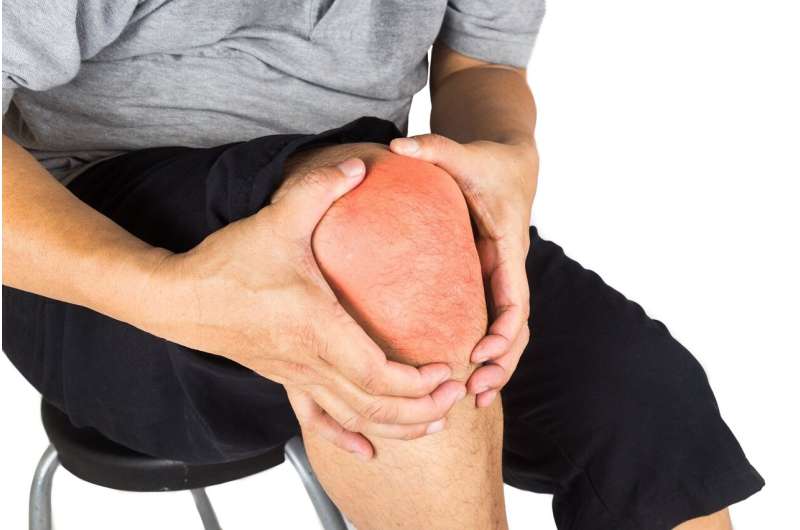This article has been reviewed according to Science X's editorial process and policies. Editors have highlighted the following attributes while ensuring the content's credibility:
fact-checked
trusted source
proofread
New alloy shown to produce better human joint implants

Stiffness, pain and infections in orthopedic surgery is being tackled by Flinders University researchers driving innovation in alloy materials to produce safe and superior implants compatible with human tissue.
In their latest study, experts evaluated new titanium-based alloys containing gallium additions with the aim of offering beneficial antibacterial properties while having a reduced stiffness level to minimize discomfort when in contact with bone.
The findings are published in the Journal of Functional Biomaterials.
"The alloys in this work have shown very promising results and are part of ongoing efforts to improve components in orthopedic implants," says Dr. Reza Hashemi, a Senior Lecturer in Mechanical Engineering at Flinders University's Tonsley campus.
"Compared to existing prostheses, the addition of gallium produces a superior material with antibacterial properties to improve patient outcomes while reducing potential pain, medical complications and long-term implant failure."
Materials Engineering graduate Rhianna McHendrie, first author of the newly published article, developed the new combinations as part of her master's thesis at Flinders University.
"The metal alloys developed in this project show a substantial enhancement in antimicrobial performance compared to the commonly used titanium alloy used in medical implants," she says.
The research to improve implant materials was in collaboration with Flinders University experts Professor Krasimir Vasilev and Dr. Vi Khanh Truong from the Biomedical Nanoengineering Laboratory in the College of Medicine and Public Health.
At the same time, Dr. Hashemi's research group at Flinders University—in collaboration with the Australian Orthopedic Association National Joint Replacement Registry (AOANJRR), Royal Adelaide Hospital and UniSA—are also looking into whether machine learning (ML) algorithms could be used as part of initial screening for hip and knee joint replacements in order to reduce long-term complications.
This research recommends further studies into the usefulness of ML prediction modeling to realize the potential of various virtual selection techniques to improve the assessment of the most suitable total hip and knee prosthesis for each patient. An ML algorithm can have some advantages over conventional modeling if built to be flexible and adapt to changes in data over time.
More information: Rhianna McHendrie et al, Development of Novel Antibacterial Ti-Nb-Ga Alloys with Low Stiffness for Medical Implant Applications, Journal of Functional Biomaterials (2024). DOI: 10.3390/jfb15060167



















